Basil is often susceptible to fungal diseases. Pathogenic agents severely damage the plant's vascular system and can destroy a significant portion of the crop. The main cause of this phenomenon is improper care or its complete absence. In this article, you will learn about common basil diseases and see photos of affected plants.
Table of contents
Basil Diseases and How to Combat Them
Common issues include yellowing and curling leaves, as well as fungal infections. Beginners often struggle to identify specific diseases since some symptoms can appear similar.
Fusarium Wilt
This fungal infection occurs due to high temperatures and excessive humidity. The causative agent is the fungus Fusarium, which thrives in greenhouses, polytunnels, and open soil, especially when basil is left unattended.
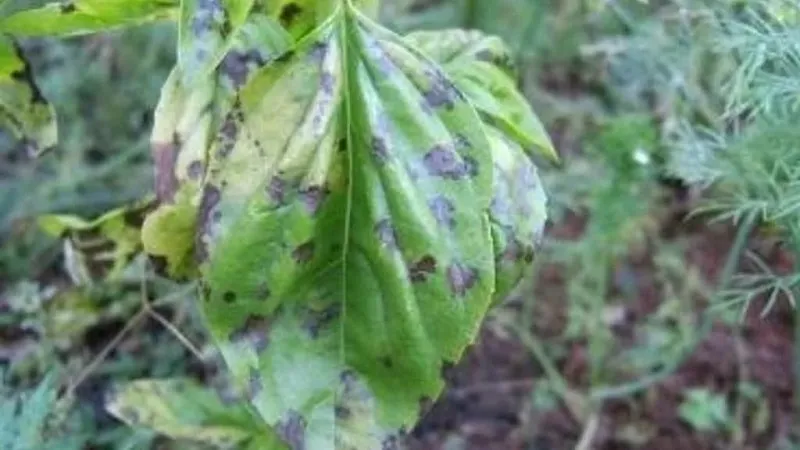
With Fusarium wilt, the leaf surface becomes covered in black and dark brown spots. The leaves gradually thin out, turn pale, and yellow. Young basil plants may develop a purple hue.
Without treatment, the leaves darken, curl, dry out, and the plant eventually dies.
Early-stage infections can be treated with fungicides like Score or Bravo, as well as home remedies such as onion peel infusion. In severe cases, infected plants must be removed and destroyed.
Blackleg
This fungal infection is triggered by:
- Overwatering — waterlogged soil encourages mold growth.
- Poor soil aeration — compacted soil forms a crust, trapping moisture near roots and promoting fungal spread.
- High soil acidity.
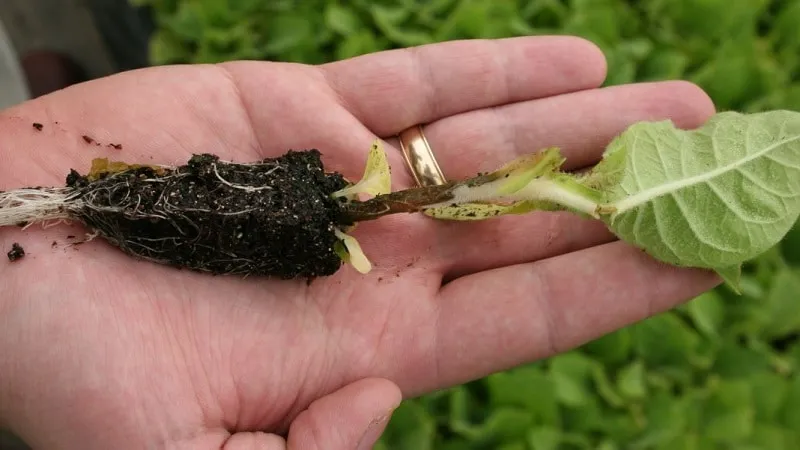
Infected plants develop a soft, thin, blackened stem base. Leaves curl and dry out, leading to the plant's death.
Blackleg is untreatable, so infected plants must be burned. The soil should be treated with formalin or a weak potassium permanganate solution. Remaining plants can be disinfected with Fitosporin or Amistar.
Note: Experienced gardeners note that purple basil is less susceptible to blackleg compared to green varieties.
Gray Mold
The fungus Botrytis cinerea is common in greenhouses and polytunnels, rarely affecting outdoor basil. The main causes are trapped condensation due to poor ventilation, plant debris, and excess moisture.
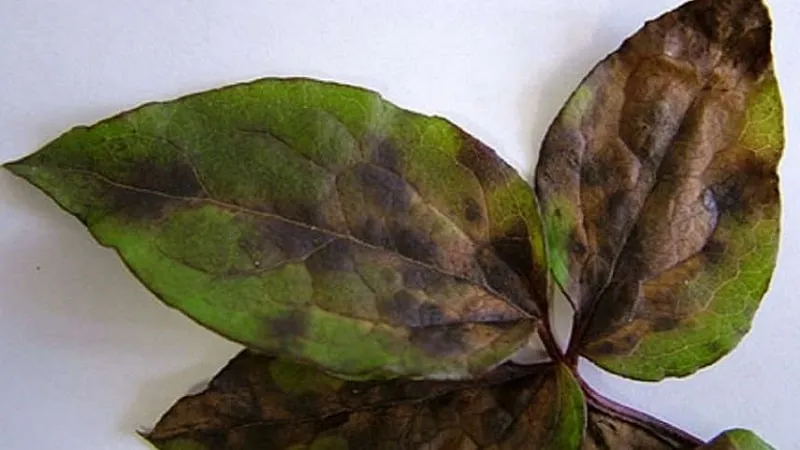
Brown, yellow, and gray spots appear on lower leaves. Affected areas become moist, developing a gray mold coating. The fungus spreads rapidly, eventually killing the plant.
Important! Chemical treatments for gray mold are ineffective. Prevention is key: moderate watering, crop rotation, and avoiding overcrowded planting.
Yellowing Leaves
Basil leaves may suddenly turn yellow or gray instead of their usual green or purple.
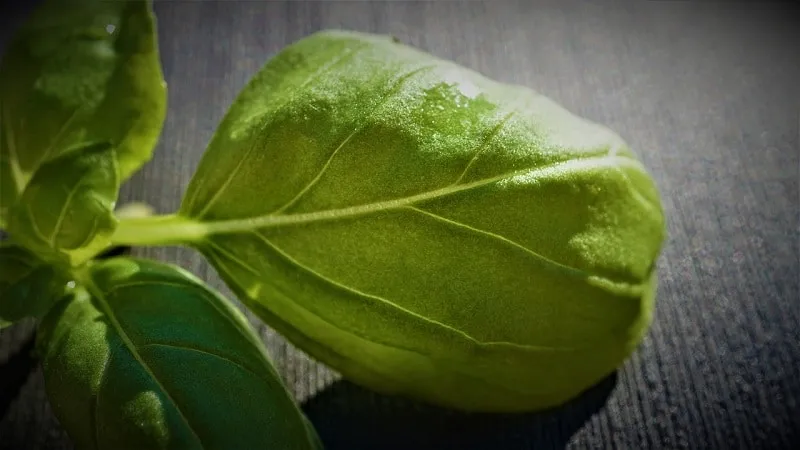
Possible causes:
- Poor soil quality or nutrient deficiency.
- Root damage during transplanting.
- Insufficient pot size for indoor cultivation.
- Pests — aphids, bugs, snails, slugs, or spider mites.
If yellowing occurs, address the root cause. Use nitrogen-, magnesium-, and phosphorus-rich fertilizers.
Leaf Curling
This issue mainly affects large-leaf varieties, where leaves curl inward.
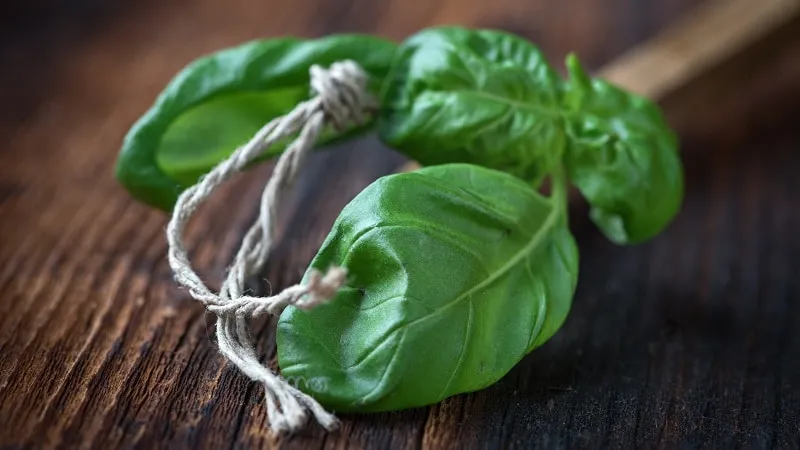
Causes include:
- Diseases and pests — blackleg, downy mildew, Fusarium wilt, aphids, or bugs.
- Poor care — underwatering, overwatering, extreme heat, or root damage.
Eliminate pests and treat diseases (except for gray mold, blackleg, or Fusarium wilt). Adjust watering and fertilization schedules.
Leaf Drop
This is rare but can happen due to extreme soil dryness, disrupting photosynthesis.
Growth slows, making the plant unsuitable for culinary use. Solution: regular but moderate watering.
Preventing Basil Diseases
Follow these preventive measures:
- Disinfection: Treat seeds and soil with potassium permanganate or copper sulfate before planting. If pests were present last season, pour boiling water over the soil. Use sterilized tools.
- Aeration: Loosen soil after watering or rain, removing weeds.
- Fertilization: Feed basil every two weeks, alternating organic and mineral nutrients. Water well before applying.
- Watering: Water only when the topsoil is dry, preferably in the morning or evening with room-temperature water.
- Mulching: Cover beds with straw, hay, or compost to improve airflow and prevent moisture buildup.
- Soil preparation: Dig the soil before planting, removing weed roots.
- Crop rotation: Change basil's planting location yearly. Ideal predecessors are legumes.
Conclusion
To ensure healthy basil growth and flavorful harvests, proper care is essential: timely watering, disease and pest control, and preventive measures.







